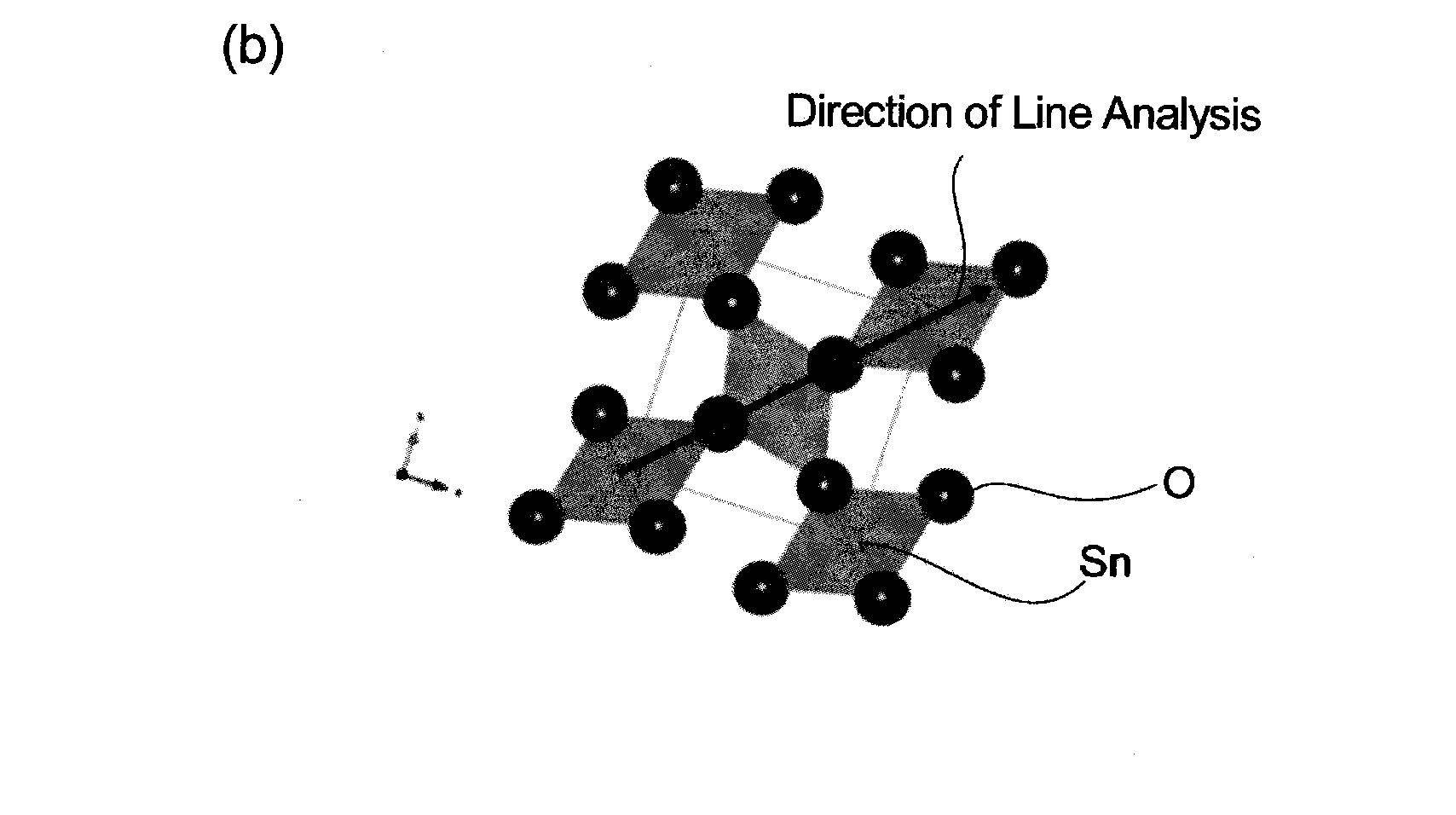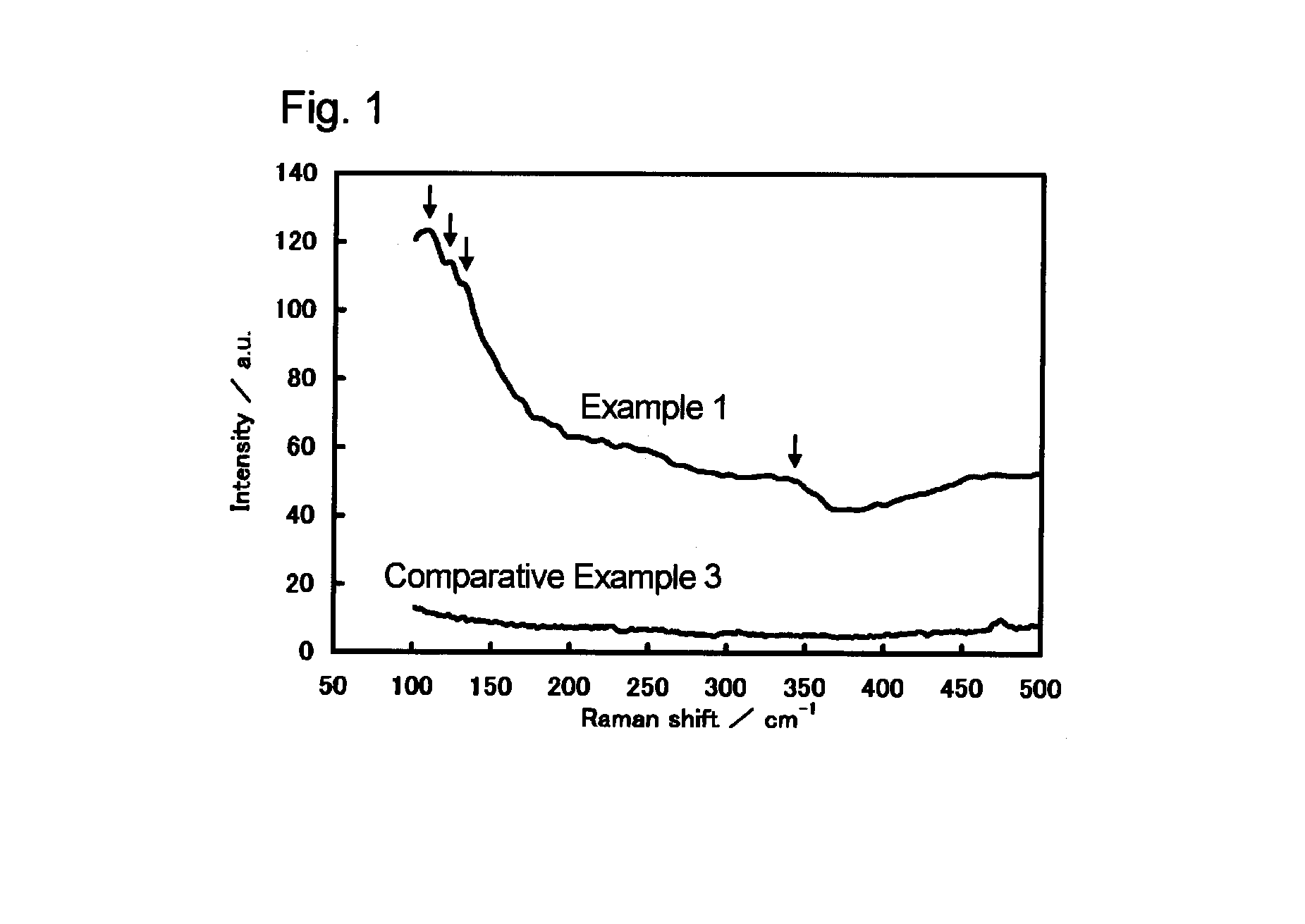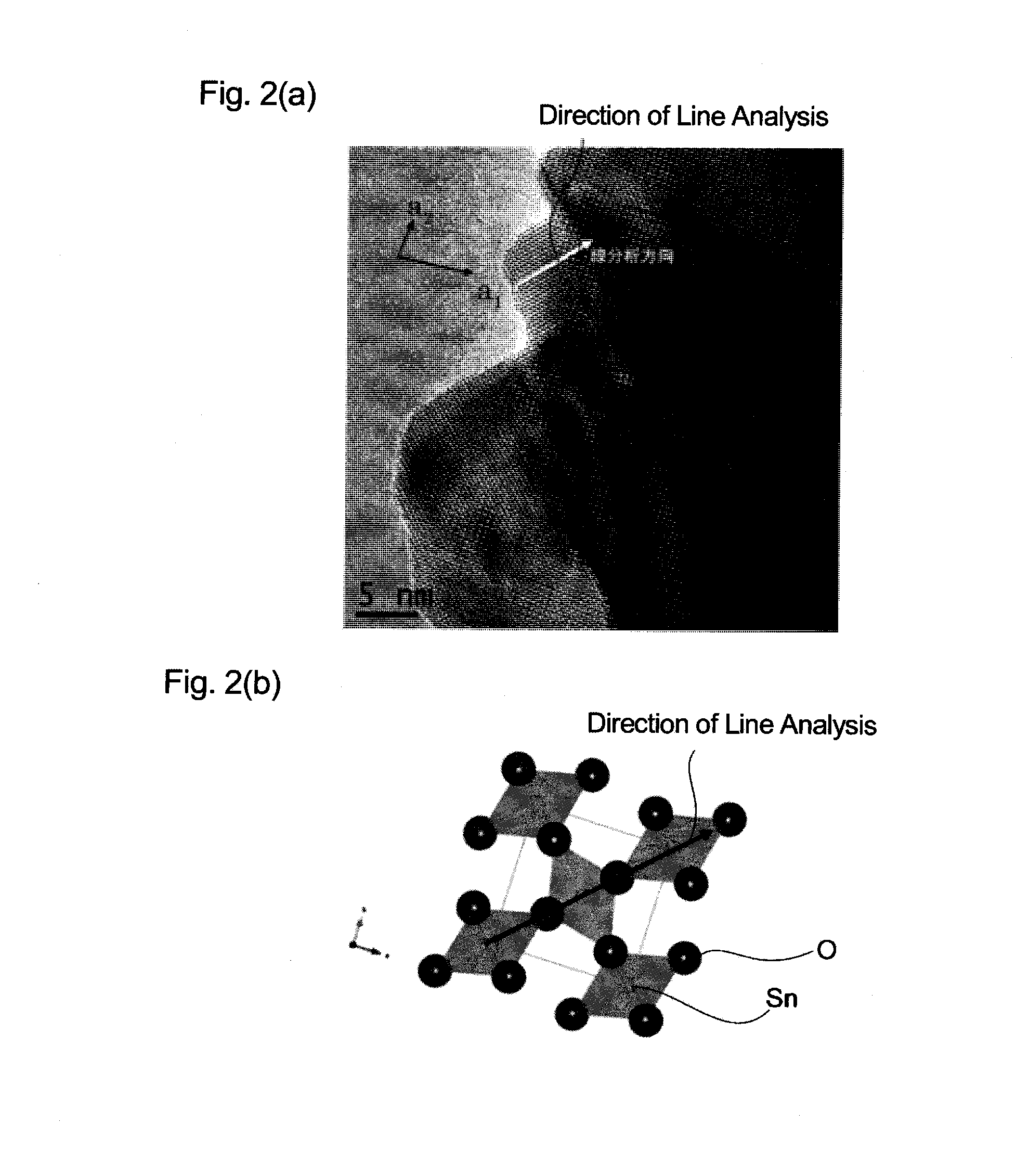Chlorine-doped tin-oxide particles and manufacturing method therefor
a technology of tin oxide and chlorinedoped tin, which is applied in the direction of tin oxide, oxide conductors, non-metal conductors, etc., can solve the problems of environmental burden, limit the utility of plastics, and use of antimony, and achieve stable electroconductivity with time and high electroconductivity
- Summary
- Abstract
- Description
- Claims
- Application Information
AI Technical Summary
Benefits of technology
Problems solved by technology
Method used
Image
Examples
example 1
[0055]In 490 g of pure water was dissolved 4.51 g of sodium hydroxide to prepare a basic aqueous solution, designated solution A. Separately, in a 200 ml beaker containing 100 g of pure water was put 5.0 g of polyvinyl alcohol (average degree of polymerization: 400 to 600; fully hydrolyzed product; hereinafter abbreviated as PVA) and dissolved by heating at 90° C. to prepare a PVA aqueous solution, designated solution B. In a separate beaker was put 390 g of pure water, and 12.57 g of tin dichloride was dissolved therein to prepare a tin aqueous solution, designated solution C. The whole amount of solution B was added to solution C, followed by thoroughly mixing to provide a mother solution, designated solution D.
[0056]Solution D was heated to 90° C. while stirring with a paddle stirrer, and the whole amount of solution A was fed thereto using a tube pump. During the feed, the pH of solution D was 3 to 4. After completion of the addition, the mixture was aged for 5 minutes. A soluti...
example 2
[0058]Chlorine-doped tin oxide particles were obtained in the same manner as in Example 1, except that the mixing of solution A and solution D was carried out at room temperature (about 25° C.) and that solution E (dilute hydrogen peroxide solution) was not added.
example 3
[0059]Chlorine-doped tin oxide particles were obtained in the same manner as in Example 1, except that solution B (PVA aqueous solution) was not added.
PUM
| Property | Measurement | Unit |
|---|---|---|
| Particle size | aaaaa | aaaaa |
| Particle size | aaaaa | aaaaa |
| Specific surface area | aaaaa | aaaaa |
Abstract
Description
Claims
Application Information
 Login to View More
Login to View More - R&D
- Intellectual Property
- Life Sciences
- Materials
- Tech Scout
- Unparalleled Data Quality
- Higher Quality Content
- 60% Fewer Hallucinations
Browse by: Latest US Patents, China's latest patents, Technical Efficacy Thesaurus, Application Domain, Technology Topic, Popular Technical Reports.
© 2025 PatSnap. All rights reserved.Legal|Privacy policy|Modern Slavery Act Transparency Statement|Sitemap|About US| Contact US: help@patsnap.com



